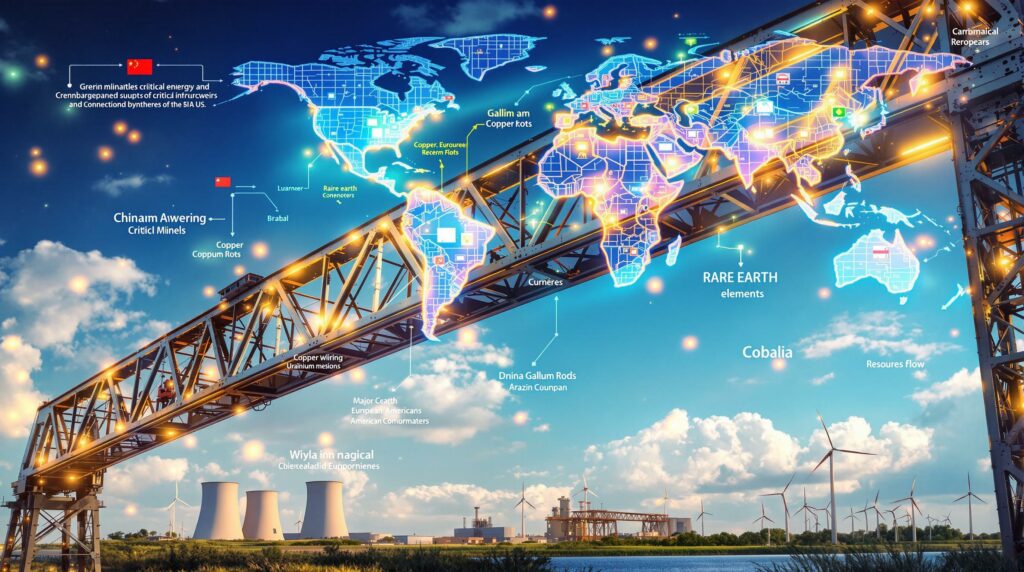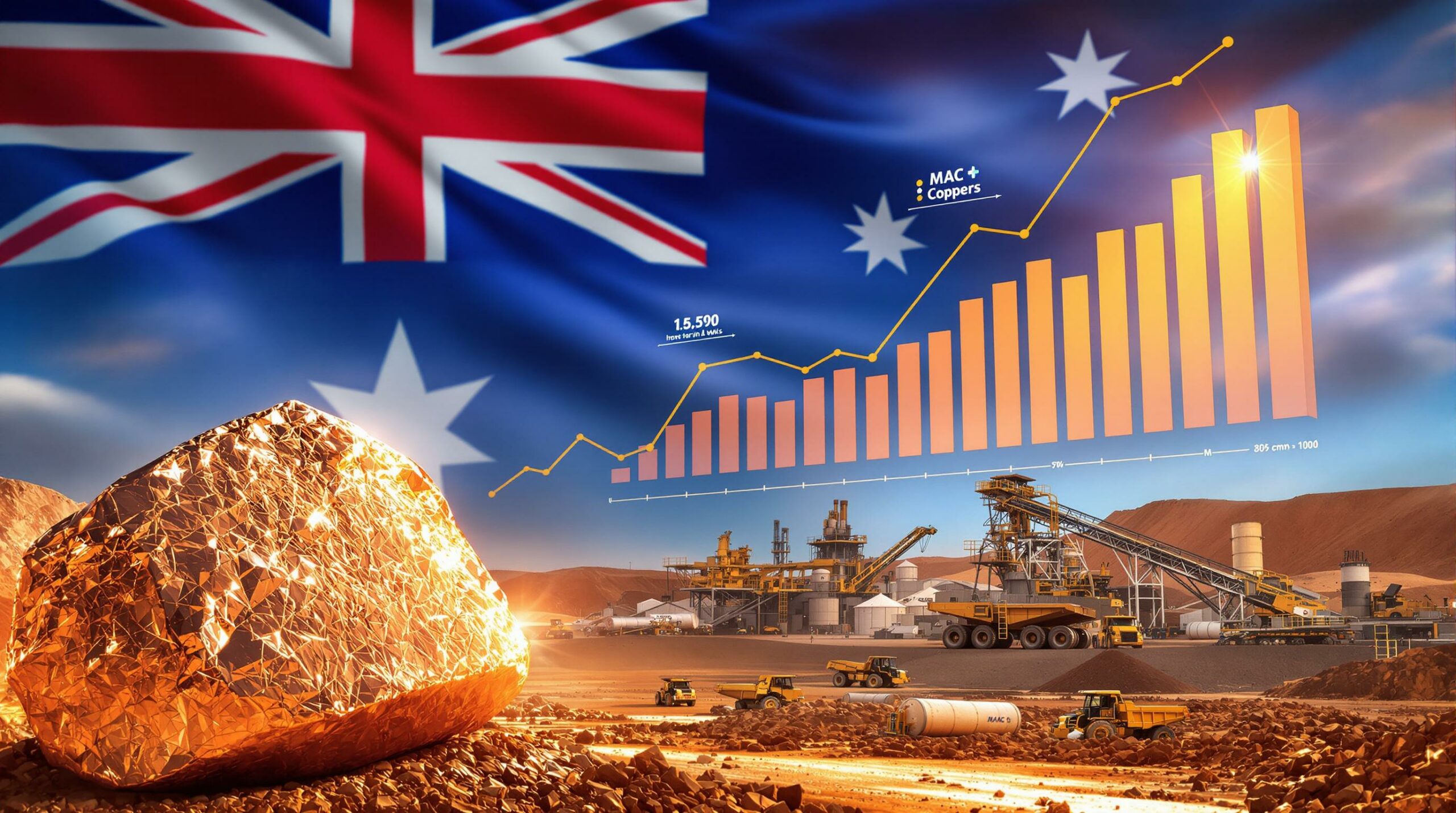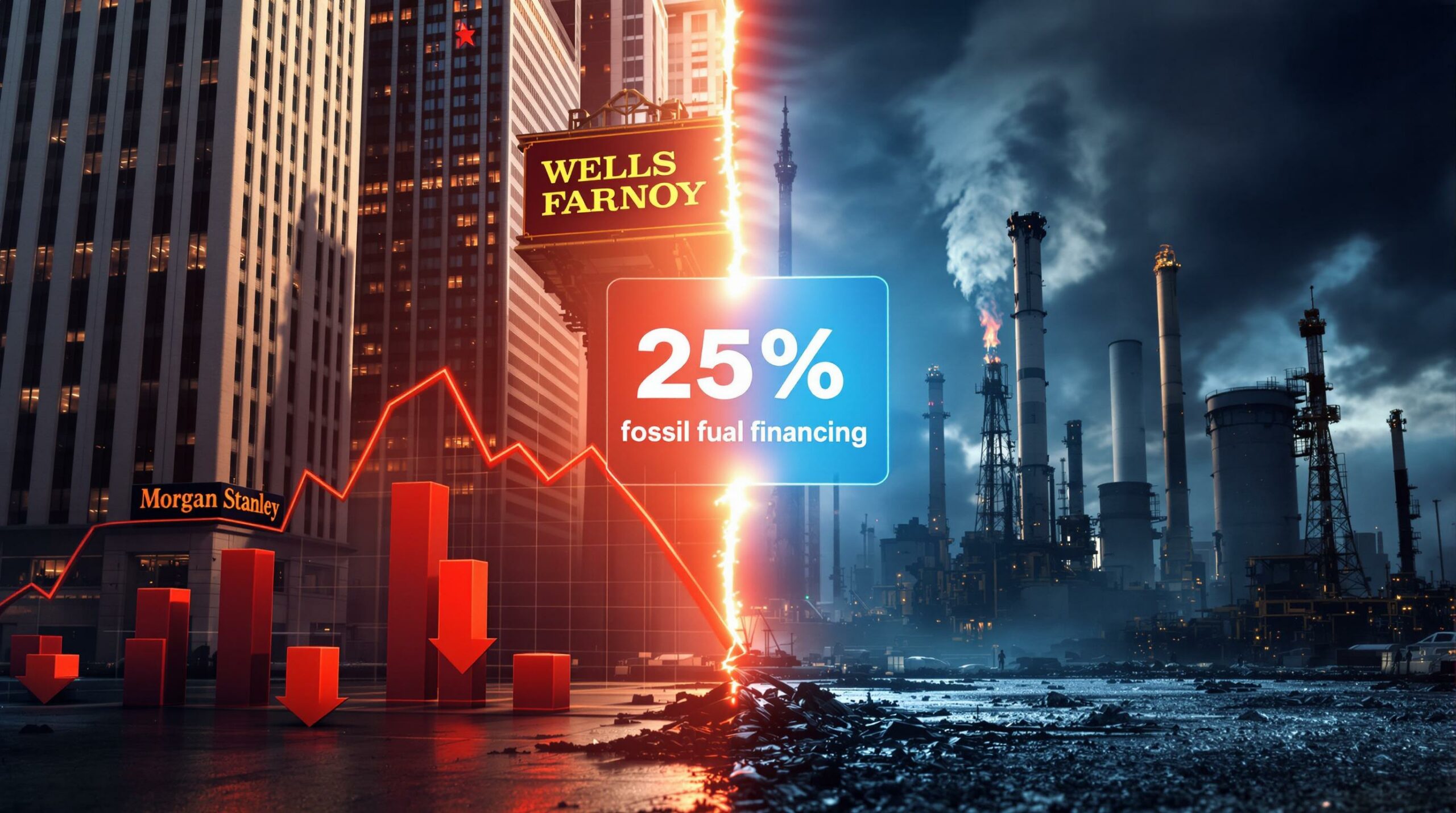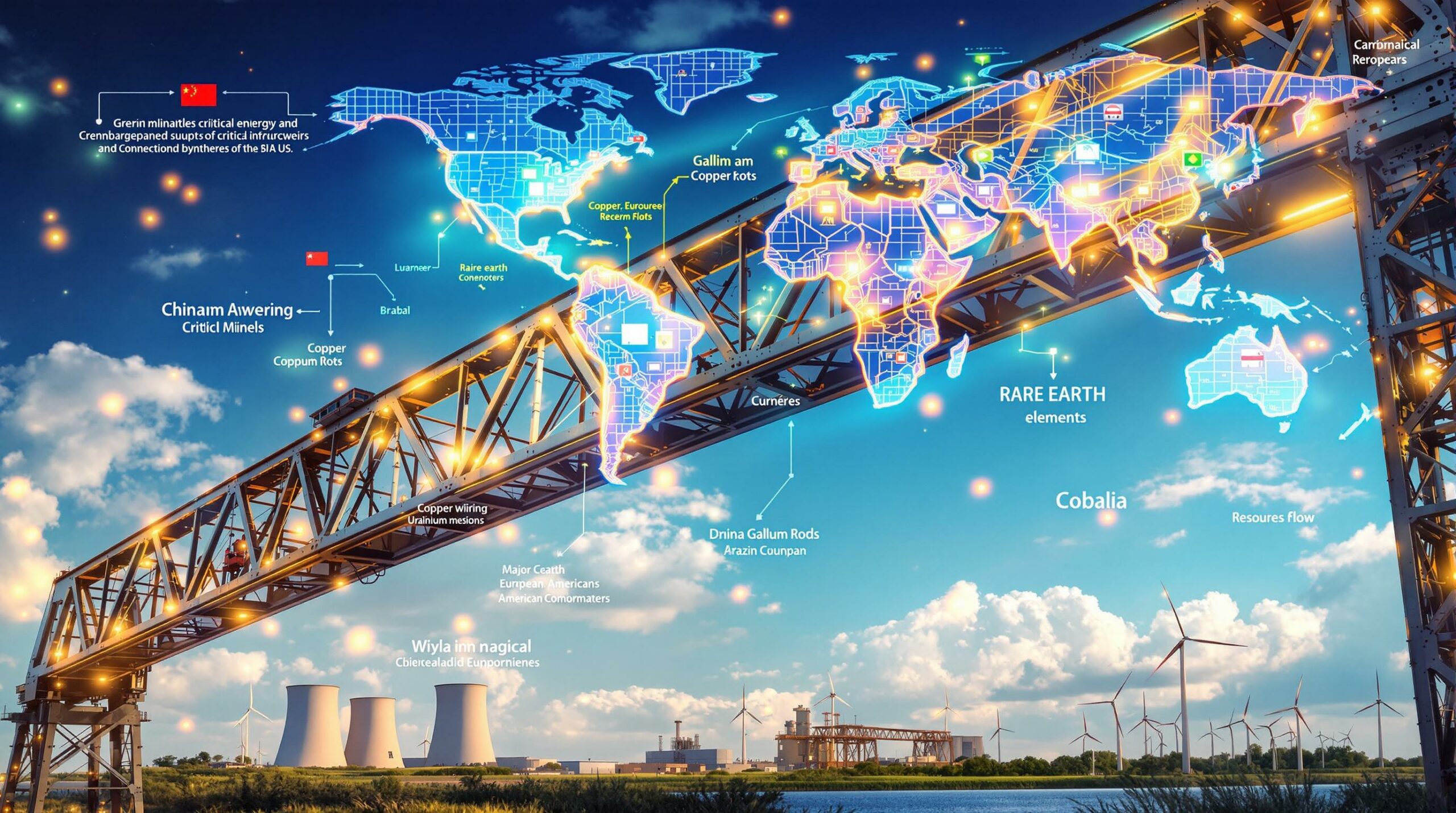What Are Critical Minerals and Why Do They Matter?
Critical minerals form the backbone of modern economies, powering everything from smartphones to defense systems. These essential materials face significant supply risks while being vital for economic and national security. As global competition intensifies, nations are racing to secure reliable access to these resources through various policy approaches and strategic partnerships.
The Critical Minerals Institute (CMI) maintains one of the most comprehensive critical mineral watchlists globally, integrating data from 12 different national frameworks and detailed trade flow analysis to identify materials facing the highest supply risks.
As Jack Lifton of CMI noted, "the nineteenth-century steel age never ended—it has simply morphed into a high-stakes age of critical minerals," highlighting how these resources have become central to geopolitical competition and industrial policy.
The Evolution of Critical Mineral Classifications
Critical mineral classifications have evolved dramatically in recent years, expanding beyond the initial focus on rare earth elements to encompass dozens of materials crucial to energy transition, defense applications, and advanced manufacturing.
What began as concerns over a handful of materials has grown into comprehensive frameworks that assess not just geological scarcity but also processing bottlenecks, market concentration, and geopolitical vulnerabilities. This evolution reflects the growing recognition that supply chain security extends beyond mining capacity to include refining, processing, and manufacturing capabilities.
The methodologies for determining "criticality" have become increasingly sophisticated, with most frameworks now incorporating both economic importance and supply risk in their assessments. This dual approach helps policymakers prioritize strategic initiatives and investment decisions across diverse mineral resources.
Why Has Steel Been Elevated to Critical Status?
Steel's Surprising New Classification
In a significant development that has surprised many industry observers, steel has been added to the CMI's 2025 Critical Minerals Watchlist, expanding the list to 24 materials. This addition reflects growing recognition that even seemingly abundant materials can face strategic supply constraints when demand surges or geopolitical tensions rise.
The CMI's decision signals that "supply risk now extends to the very backbone of every decarbonization project on the planet," highlighting steel's unique blend of strength, formability, and durability that makes it "the workhorse of modern industry."
This classification challenges conventional thinking about what constitutes a "critical" mineral, moving beyond simple geological scarcity to consider complex supply chain vulnerabilities and critical minerals energy security.
The Foundation of Decarbonization Infrastructure
Steel's elevation to critical status stems from its foundational role in virtually every decarbonization project worldwide. From wind turbines to electric vehicle manufacturing facilities, steel provides the structural backbone for the energy transition.
A single 3-megawatt wind turbine requires approximately 335 tons of steel, highlighting the material's outsized importance in renewable energy infrastructure. This requirement multiplied across thousands of planned turbines creates enormous demand pressure that could strain even global steel production capacity.
Solar installations, grid infrastructure, and hydrogen facilities similarly depend on specialized steel grades, creating potential bottlenecks in multiple clean energy sectors simultaneously if supply chains become constrained.
Supply Concentration Concerns
Despite steel's global production footprint, supply concentration among a few Asian producers has raised strategic concerns. Specialized steel grades essential for high-performance applications face particular supply chain vulnerabilities.
Advanced high-strength steels, corrosion-resistant alloys, and electrical steels used in motors and transformers represent particular areas of concern. These specialized products often rely on sophisticated manufacturing processes controlled by a limited number of producers, creating potential chokepoints in critical supply chains.
As infrastructure projects accelerate globally, these potential bottlenecks in high-quality steel production could impact everything from renewable energy deployment to defense applications, making steel's critical designation increasingly justified.
How Has the Critical Minerals Watchlist Changed for 2025?
New Additions: Steel and Molybdenum
The 2025 CMI Watchlist added two materials while removing one, expanding to 24 total critical minerals:
- Steel: Added due to its foundational role in infrastructure and growing supply concentration concerns
- Molybdenum: Added for "its outsized role in hardening those steels and in powering next-generation semiconductors"
- Bismuth: Removed as supply risks have decreased through diversification of production sources
These changes reflect the dynamic nature of critical mineral assessments, which respond to evolving technological needs, changing geopolitical landscapes, and shifts in global production patterns.
The Critical Top Five Remain Unchanged
The CMI reaffirmed its top five critical minerals due to persistent supply risks and rising demand:
- Copper: Essential for electrification and facing significant mine supply constraints
- Uranium: Critical for nuclear energy with concentrated production
- Gallium: Vital for semiconductors and facing export restrictions
- Rare Earth Elements: Crucial for permanent magnets with processing dominated by China
- Cobalt: Essential for batteries with supply concentrated in the DRC
These materials face particularly acute supply challenges while being essential for energy transition, defense applications, and advanced electronics. The continued presence of these five at the top of the list highlights persistent structural challenges in diversifying their supply chains despite years of attention and investment.
What Global Events Are Reshaping Critical Mineral Supply Chains?
China's Export Volatility Creates Market Uncertainty
Recent data reveals significant volatility in China's critical mineral exports. In July 2025, rare earth exports fell 23% month-on-month to 5,994 tonnes, despite Beijing's agreements with Washington and Brussels to ease the export licensing regime implemented in April.
This volatility demonstrates how policy decisions in dominant producer countries can rapidly disrupt global supply chains. While year-to-date exports remain up 13% overall, the monthly fluctuations create significant planning challenges for manufacturers.
The full product breakdown, expected on August 20, will provide crucial insight into whether high-value magnet materials or lower-value products dominated these shipments. This distinction matters enormously for industries dependent on specific rare earth elements rather than the broader category.
Europe's Push for Supply Chain Independence
Europe is taking concrete steps to reduce dependence on China for critical minerals. Solvay's La Rochelle plant in France—described as "still the only site outside China capable of separating all seventeen rare-earth elements"—has begun a €20 million expansion to pivot from autocatalyst feed to high-purity magnet metals.
The facility aims to meet 30% of Europe's rare earth demand by 2030 through recycling and new feedstock from allied nations including Brazil, Canada, and Australia. This initiative directly supports the EU's Critical Raw Materials Act, which targets greater domestic processing capacity through the development of an European CRM facility.
This significant investment demonstrates Europe's commitment to developing sovereign capabilities across the full rare earth value chain, from separation to magnet manufacturing, reducing vulnerability to supply disruptions from dominant producers.
U.S. Strategic Partnerships Reshape Global Trade Flows
The United States is leveraging both government policy and corporate partnerships to secure critical mineral supply. A revealing example comes from South Africa, where President Cyril Ramaphosa offered the Rainbow Rare Earths Phalaborwa project to the U.S. in 2019, hoping to gain American backing for a non-Chinese source of neodymium-praseodymium (NdPr).
Since then, the project has attracted a $50 million investment from the U.S. International Development Finance Corporation through TechMet. The project is now positioned to benefit from a July agreement in which the U.S. Department of Defense guaranteed MP Materials a ten-year minimum price of $110 per kilogram for NdPr—nearly double the current spot price.
This combination of financial support and price guarantees illustrates the multi-faceted approach the U.S. is taking to secure critical mineral supply chains, using both development finance and defense-critical materials strategy to reshape global investment flows.
How Are Price Guarantees Changing the Critical Minerals Landscape?
The Emergence of Sovereign Price Floors
Government price guarantees are emerging as a powerful tool to stimulate critical mineral production. The U.S. Department of Defense's agreement with MP Materials, guaranteeing $110/kg for NdPr over ten years, represents a significant shift toward direct market intervention.
Australia is following suit, with officials "actively considering" a rare earth price-floor mechanism backed by an A$1.2 billion strategic reserve plan. Even the hint of sovereign support lifted shares of Australian rare earth companies significantly, with Lynas Rare Earths reaching a thirteen-year high while Iluka Resources and Arafura Rare Earths jumped approximately 10%.
This "contagious" precedent suggests a fundamental shift in how governments approach critical mineral security, moving from traditional subsidies and trade policy toward direct price intervention to stimulate production outside dominant supplier countries.
The Economic Impact of Price Guarantees
Price guarantees fundamentally alter project economics by reducing investment risk. Projects that might be unviable under volatile market conditions become attractive when minimum prices are assured. This approach could accelerate development timelines for critical mineral projects globally.
The ripple effects extend to capital markets, where mining companies with exposure to price-guaranteed minerals have seen significant valuation increases. This trend suggests investors are placing a premium on projects with reduced market risk through government backing.
For project developers, these guarantees transform the economic calculus around capacity expansion and processing investments. Long-term contracts at premium prices allow companies to secure financing for projects that might otherwise struggle to attract capital in volatile commodity markets.
What Role Does Resource Nationalism Play in Critical Minerals?
Brazil's Strategic Minerals Sovereignty Push
Resource nationalism is intensifying globally. Brazil's President Luiz Inácio Lula da Silva recently declared strategic minerals a matter of "national sovereignty," vowing to end the export of raw ores without domestic value-addition and to comprehensively map the nation's geological resources.
This policy shift comes amid 50% U.S. tariffs on Brazilian imports and illustrates how governments are increasingly linking minerals policy to broader foreign policy objectives. Brazil's approach reflects a growing trend of resource-rich nations seeking to capture more value from their mineral wealth.
The creation of a new minerals council charged with developing the country's resources for maximum domestic benefit signals a systematic approach to resource nationalism that goes beyond traditional export taxes or restrictions.
The DRC's Cobalt Export Suspension
The Democratic Republic of Congo (DRC) has extended its cobalt export suspension, originally implemented in February when prices hit nine-year lows. This decision by the world's largest cobalt supplier demonstrates how producing countries can leverage their market position to influence global prices.
Mining giant Glencore warned that much of its cobalt output could remain unsold through 2025 due to the ban. Despite stockpiling every pound produced since February, Glencore's first-half output rose 19% to 18,900 tonnes. The company's reassurance that "zero sales would not dent profits illustrates the distorted economics that emerge when a single country controlling seventy percent of global supply turns off the spigot."
This market power highlights the challenges faced by industries dependent on cobalt, particularly battery manufacturers, and underscores why diversification of supply and development of alternative technologies have become strategic priorities for many nations and corporations.
How Is Nuclear Energy Influencing Critical Mineral Demand?
Nuclear Revival Drives Uranium Market
Nuclear energy is experiencing a resurgence in the United States, with potential to add seven gigawatts of capacity by 2030—approximately a 7% increase—primarily through restarting shuttered plants and upgrading existing reactors.
Several major projects are underway:
- Holtec International is on track to revive the 800 MW Palisades plant this year
- Constellation Energy is preparing to bring Three Mile Island Unit 1 back by 2027 under a long-term clean-power deal with Microsoft
- NextEra Energy may restart Iowa's Duane Arnold station
This revival is creating significant new demand for uranium, reactor components, and specialized materials at a time when global uranium market dynamics are already strained by geopolitical tensions and underinvestment.
Rebuilding the Nuclear Fuel Cycle
The nuclear revival extends to fuel production. General Matter signed a $1.5 billion lease with the Department of Energy to build an enrichment plant at Paducah, Kentucky, reusing 7,600 cylinders of depleted UF₆ as feedstock and reducing reliance on Russian imports before waivers expire in 2028.
This investment reflects growing recognition of uranium's critical status and the strategic importance of domestic fuel cycle capabilities. As nuclear power expands globally, securing the entire supply chain from mining to enrichment has become a national security priority.
The focus on reprocessing existing depleted uranium highlights the complex interplay between resource efficiency, energy security, and strategic material management that characterizes modern approaches to critical minerals.
What Lesser-Known Critical Minerals Are Gaining Strategic Importance?
Pentagon Investment in Niobium and Scandium
The U.S. Department of Defense is directing capital toward less familiar but strategically important metals. Elk Creek Resources, a unit of NioCorp Developments Ltd., secured up to $10 million under the Defense Production Act to advance its Nebraska project rich in niobium, scandium, titanium, and rare earths.
By implementing design improvements, including scrapping a costly acid plant and installing an electric underground rail system, NioCorp has reduced project capital requirements by approximately $300 million. The company has secured binding off-take agreements for 75% of planned niobium production and twelve tonnes of scandium annually, with discussions underway with Stellantis for rare earth supply.
This investment highlights how defense requirements are driving attention to specialized metals that enable high-performance applications in aerospace, armor, and electronics—materials that might otherwise struggle to attract sufficient investment based on commercial markets alone.
Molybdenum's Rising Profile
Molybdenum's addition to the CMI Critical Minerals Watchlist highlights its growing strategic importance. This versatile metal plays a crucial role in strengthening steel alloys, particularly for high-temperature applications in aerospace, defense, and energy infrastructure.
Beyond steel applications, molybdenum is increasingly important in semiconductor manufacturing and catalysts. As advanced manufacturing expands globally, securing reliable molybdenum supply has become a priority for both governments and industry.
Molybdenum's dual role in both traditional industrial applications and advanced technologies makes it particularly interesting as a bridge between conventional mineral markets and the high-tech materials driving the energy transition and digital transformation.
What Does the Future Hold for Critical Mineral Supply Chains?
The Acceleration of Strategic Alliances
The critical minerals landscape is increasingly shaped by strategic alliances rather than purely market forces. From General Motors' agreement with Noveon Magnetics for rare earth magnets to international partnerships between resource-rich nations and technology leaders, securing supply chains through direct relationships is becoming the norm.
These alliances often span multiple countries and involve both public and private entities. The model represents a fundamental shift away from reliance on spot markets toward long-term, relationship-based supply arrangements backed by government support.
This transition is occurring against a backdrop of changing consumer preferences, as evidenced by GM's allocation of "nearly $900 million to a new V-8 engine plant" amid first-half U.S. electric-vehicle sales that gained "just a 1.5 percent" while global sales "jumped twenty-eight percent." These divergent trends highlight how regional variations in adoption rates affect critical mineral demand patterns.
The Integration of Industrial and Foreign Policy
Critical minerals have moved from technical supply chain concerns to central foreign policy considerations. Nations are increasingly using access to these materials as leverage in broader geopolitical negotiations, while simultaneously developing domestic capabilities to reduce vulnerabilities.
This integration of industrial and foreign policy represents a significant shift in how governments approach resource security. Critical minerals are no longer merely economic inputs but strategic assets that influence international relations and national security planning.
As one industry observer noted, "Market forces alone no longer set the pace—industrial policy and strategic alliances increasingly dictate who controls tomorrow's supply," highlighting the profound transformation underway in global material supply chains and the impact of the Trump executive order on minerals.
How Should Investors Approach the Critical Minerals Sector?
Evaluating Government Support Mechanisms
For investors, government support mechanisms have become crucial factors in evaluating critical mineral projects. Price guarantees, direct investments, and strategic partnerships can fundamentally alter project economics and reduce market risks.
Projects with government backing—whether through Defense Production Act funding, price floors, or strategic partnerships—may offer more stable returns despite potentially higher initial valuations. Investors should carefully assess the nature and durability of government support when evaluating opportunities.
This assessment should include understanding not just the headline numbers but the specific terms, conditions, and timeframes associated with government support. Projects with guaranteed offtake at fixed prices present fundamentally different risk profiles than those exposed to spot market volatility.
Identifying Supply Chain Positioning
A company's position within critical mineral supply chains significantly impacts its strategic value. Firms that control bottleneck processes—such as separation and processing—often command premium valuations compared to pure mining operations.
Investors should evaluate not just resource quality and quantity but also a company's ability to provide the specific forms of materials needed by end-users. Companies that can deliver processed materials ready for manufacturing applications typically enjoy stronger market positions than those selling unprocessed ores.
The most valuable positions in many critical mineral supply chains are often in the "middle" segments—the processing, refining, and specialized manufacturing steps that transform raw materials into high-value inputs for technology products. Companies that can successfully bridge these gaps may represent particularly attractive investment opportunities.
What Are the Key Takeaways About Critical Minerals in 2025?
The Expanding Definition of "Critical"
The addition of steel to critical mineral lists demonstrates that even seemingly abundant materials can face strategic supply constraints. This expanding definition reflects growing
Want to Identify the Next Major Mineral Discovery Before the Market?
Gain real-time alerts on significant ASX mineral discoveries powered by Discovery Alert's proprietary Discovery IQ model, providing actionable insights for both short-term traders and long-term investors. Visit Discovery Alert's discoveries page to understand why major mineral discoveries can lead to substantial returns, and begin your 30-day free trial today.




